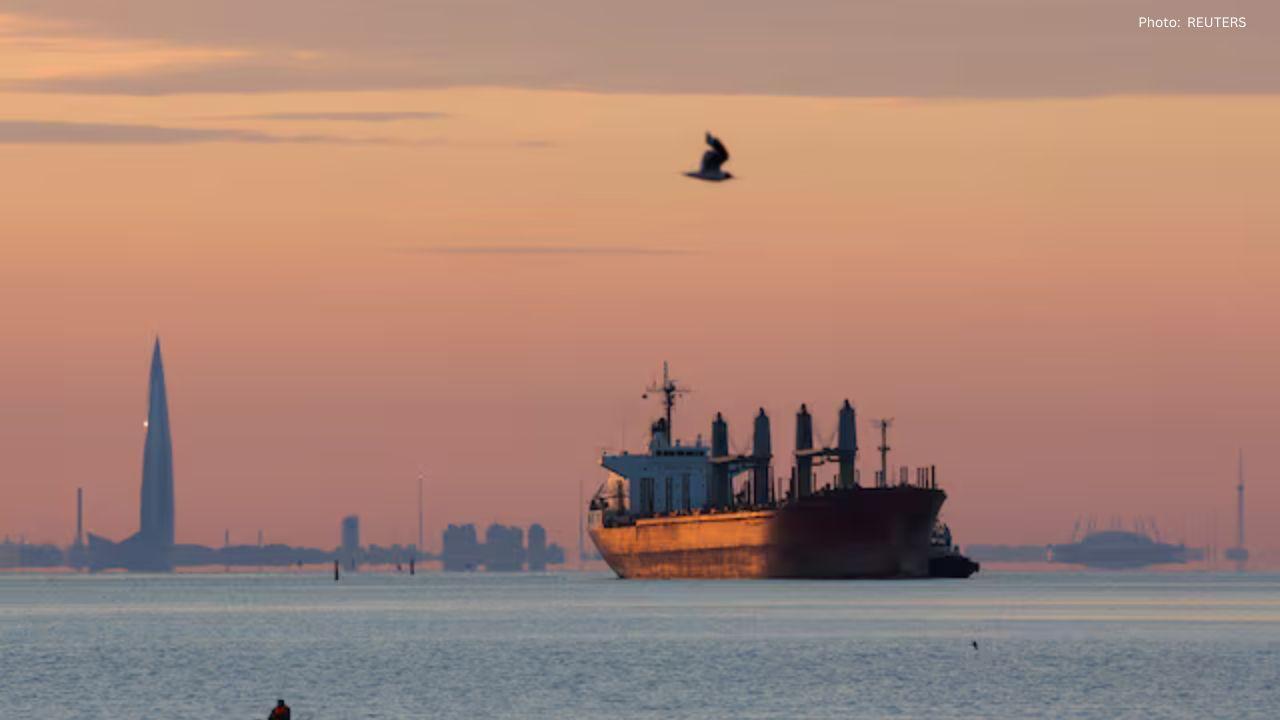
Post by : Anees Nasser
Summer no longer arrives gently. It crashes in with unbearable heat. Monsoons no longer refresh cities; they drown them. Winter no longer cools the air; it traps pollution inside homes and lungs.
What once felt seasonal is now unstable.
Across Indian cities, climate extremes have become part of daily conversation. Roads turn into rivers after a few hours of rain. Hospitals overflow during heatwaves. Power demand spikes as air conditioners fight rising temperatures. Water tankers replace pipelines. School timings change. Work hours shift. Life adjusts to weather—not the other way around.
This shift has raised a crucial question: Are Indian cities truly preparing for climate reality—or just reacting to disasters after they strike?
Urban India stands at a crossroads where planning will decide survival.
For many years, climate change was discussed as a future problem. A matter for the next generation.
That future has arrived.
Cities are now frontline zones where climate change shows itself every day. Rainfall patterns are unpredictable. Temperatures are breaking records. Sea levels are creeping up in coastal towns. Air quality worsens when winds fail.
Urban infrastructure was never designed for this new reality.
Drainage systems assume “normal” rain.
Buildings assume “average” summers.
Power grids assume steady demand.
Water systems assume reliable rainfall.
Everything assumes stability.
Nature no longer offers it.
Indian cities are expanding faster than they are being redesigned. As populations grow, construction rises. Green spaces fall. Lakes vanish. Soil disappears under concrete.
This makes cities:
Hotter
Flood-prone
Drier
Dirtier
Less breathable
Urban regions trap heat due to cement and glass surfaces. They absorb sunlight and release it slowly at night, preventing cooling.
This phenomenon—commonly felt in most metros—amplifies heatwaves.
Meanwhile, unplanned construction blocks natural drainage. Rivers are choked. Wetlands are filled. Water has nowhere to go.
So when rain arrives, it doesn’t flow.
It floods.
Cities are built for efficiency, not resilience.
This short-term thinking has produced:
Roads that collapse in rain
Power networks that fail in heat
Water pipelines that dry in drought
Buildings that trap heat like ovens
Slums located on floodplains
Climate does not respect urban boundary lines.
Nature reclaims space where planning retreats.
Climate action plans are supposed to guide cities on how to prepare, adapt, and protect their people.
In theory, they include:
Flood management strategies
Heat mitigation measures
Emergency response systems
Air pollution control
Water conservation programs
Sustainable transport planning
Green space development
In reality, many exist as documents more than blueprints.
Cities publish plans. But implementation remains the test.
Every monsoon exposes how vulnerable cities remain.
What goes wrong:
Overflowing drains
Blocked rivers
Broken roads
Power cuts
Sewage backflow
Submerged homes
The issue is not only rainfall.
It is urban design failure.
Rainwater has no escape.
Urban concrete does not absorb it. Lakes are filled in. Natural channels are narrowed.
Stormwater drains are:
Poorly maintained
Outdated
Choked with waste
Overloaded by rainfall
Cities grew.
Drainage systems did not.
Real flood control includes:
Protecting wetlands
Clearing river floodplains
Upgrading drainage systems
Rainwater harvesting
Reintroducing green buffers
Enforcing zoning laws
Without these, flooding is inevitable.
Floods are not accidents.
They are design mistakes.
Floods damage property.
Heatwaves destroy people.
Unlike storms, heat arrives quietly.
And it kills quietly too.
In summer months, temperatures in Indian cities now regularly cross danger levels. Humidity turns heat into furnace air. Hospitals begin seeing cases of dehydration, heat stroke, and organ failure.
The poorest suffer first.
Those who:
Work outdoors
Live in tin-roof houses
Share crowded rooms
Lack cooling devices
are most vulnerable.
Urban heat rises because:
Trees are replaced with towers
Water bodies are filled
Pavements reflect sunlight
Air cannot circulate
Pollution traps temperature
Heat no longer escapes.
It accumulates.
Effective strategies include:
White or reflective roofs
Tree planting programs
Restoring lakes and ponds
Open green corridors
Heat shelters
Cool roofing for slums
Urban parks
Public water points
Some cities have begun experimenting.
But scale matters.
Small efforts cannot fight massive climate pressure.
In many cities, water scarcity is no longer occasional.
It is routine.
Summer brings tankers. Monsoon brings contamination. Winter brings shortages.
Urban water systems were built assuming:
Regular rainfall
Clean rivers
Limited population
Abundant groundwater
None of those remain true.
The reasons are simple:
Rainwater is not harvested
Lakes are encroached
Groundwater is overdrawn
Rivers are polluted
Leakage wastes supply
Water management is reactive.
Not strategic.
It includes:
Rainwater harvesting
Wastewater treatment
Lake restoration
Groundwater recharge
Demand-based pricing
Leakage monitoring
Without these, shortages are guaranteed.
Climate change and pollution feed each other.
In winter, temperature patterns trap polluted air.
Traffic, industry, and construction release toxins.
Air cannot rise.
It stays.
Over cities.
Inside lungs.
Unstable weather creates:
Stagnant air pockets
Dust storms
Smoke retention
Temperature inversions
When evening comes, smog does not clear.
It lingers.
Air pollution:
Increases temperature
Harms rain patterns
Affects sunlight absorption
Damages health permanently
Cities cannot separate pollution from climate planning.
They are inseparable twins.
Some cities have:
Issued heat alerts
Set up cooling shelters
Promoted electric buses
Installed rainwater harvesting
Created flood maps
Expanded tree covers
But many others still struggle with:
Funding
Awareness
Governance
Corruption
Political delay
Plans exist.
Execution does not always follow.
The reasons are familiar:
Budget constraints
Bureaucratic delays
Weak coordination
Political short-termism
Land misuse
Lack of enforcement
Corruption
Cities do not lack knowledge.
They lack urgency.
For most residents, climate policy failures show up as:
Traffic gridlocks in rain
Sleepless nights in heat
Dry taps in morning
Emergency hospital visits
Floating garbage
Contaminated water
Climate breakdown is lived daily.
Not theorised.
Technology alone cannot fix poor planning.
But it helps.
Cities are now using:
Flood sensors
Weather prediction systems
Satellite mapping
Smart water meters
Pollution sensors
Data modelling
However, gadgets without governance are useless.
Technology supports action.
It cannot replace it.
Urban survival is no longer passive.
Citizens must:
Demand green spaces
Report illegal construction
Protect lakes
Participate in local planning
Adopt water-saving habits
Reduce waste
Hold officials accountable
Climate resilience begins at home.
But it must reach city hall.
Urban climate resilience is a race against time.
In the next decade:
Cities will either:
Adapt and survive
or
Ignore and suffer
The decisions taken today will shape comfort, safety, and survival for millions tomorrow.
Climate disasters are no longer unpredictable.
Only preparedness is.
Indian cities can still be saved.
But not by paperwork.
Not by press releases.
Not by delayed budgets.
They will be saved by:
Courageous governance
Honest planning
Citizen participation
Environmental justice
Long-term thinking
The city is not just concrete.
It is community.
And communities cannot survive future climates with past infrastructures.
Adaptation is no longer choice.
It is survival.
This article is intended for general informational purposes only. It does not offer environmental, legal, or policy advice. Readers are advised to consult subject experts or municipal authorities before making decisions related to climate planning or urban development.










Duke Triumphs Thanks to Cameron Boozer's 35-Point Showcase Against Arkansas
Duke secures an 80-71 victory over Arkansas as Cameron Boozer scores 35 points, celebrating Thanksgi

Palash Muchhal's Health Update Following Wedding Stress Incident
Palash Muchhal has been discharged after being hospitalized due to a stress-related issue from his w

Ajay Devgn Reflects on 28 Years Since Ishq’s Release
Ajay Devgn marks 28 years of Ishq with heartfelt memories and celebrates the impact the film had on

Saudi Arabia Set to Launch Women's World T20 Challenge in 2026
Starting in 2026, Saudi Arabia will host its first women's professional cricket tournament, featurin

Ayush Mhatre Appointed Captain of India for Under-19 Asia Cup in Dubai
The BCCI announces Ayush Mhatre as captain for the Under-19 Asia Cup starting December 12, highlight

Virat Kohli Visits MS Dhoni's Home in Ranchi Ahead of ODI
Kohli's visit to Dhoni's home sparks excitement among fans in Ranchi before the India–South Africa O